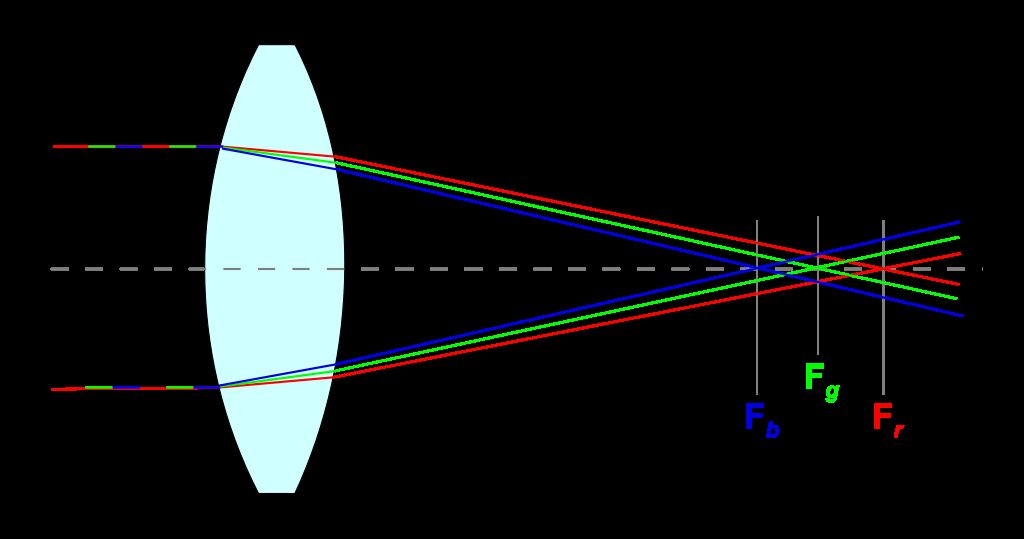Lenses are transparent objects made of glass or plastic with at least one curved side that refracts light.
Before analyzing lenses, it is important to understand the vocabulary related to them.
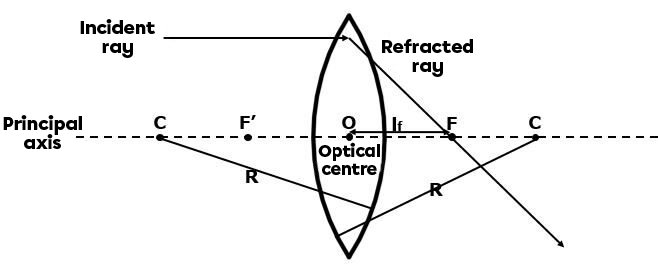
Vocabulary Related to Lenses
| Incident ray | A ray of light directed towards a surface. |
| Refracted ray | A ray of light that has been deviated by a surface. |
|
Principal focal point (or primary focus) (F) |
The point on the principal axis where incident rays parallel to the principal axis converge, or the point from which the rays appear to originate. |
| Secondary focal point (or object focus) (F') | Point located on the principal axis, but on the opposite side as the principal focal point. |
|
Optical centre (O) |
Centre of the lens. |
| Principal axis | Line passing through the optical centre that is perpendicular to the lens. |
| Focal length | Distance between the focal point and the optical centre. |
| Ray of curvature (R) | Segment linking the centre of curvature to the corresponding surface of the lens. |
The above vocabulary also applies to diverging lenses. However, the principal focal point and the secondary focal point are reversed because, by definition, the principal focal point is the point from which the parallel rays appear to originate.

In lenses, it's not true that the center of curvature is twice the focal length. Unlike mirrors, where this relationship is always true, the same cannot be said for lenses. Lens diagrams generally show the main and object focal points, as well as points at locations twice the focal length. These points are sometimes identified as 2F.
There are two types of lenses:
A converging lens is one that refracts parallel light rays so that they focus closer to the principal axis.
Converging lenses can be identified by touch, since the centre of the lens feels thicker than at the ends.
There are three types of converging lenses:
| Biconvex | Plano-convex |
Converging meniscus |
| |
 |
 |
The shape of the lens causes the rays to converge at a closer point on the principal axis.
A converging lens is denoted by a double arrow pointing outwards. This symbol comes from the construction of prisms joined together.
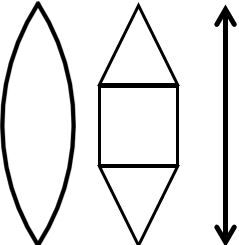
Converging lenses have the ability to gather parallel rays that pass through them to their focal point.
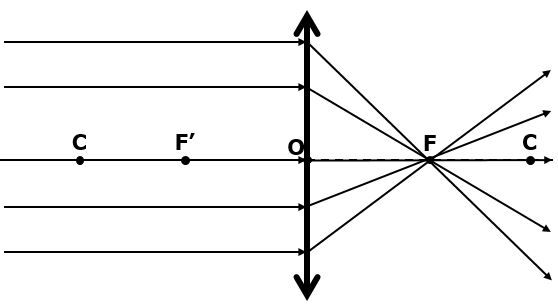
When an object is placed in front of a converging lens, there are three main rays that can be used to determine the position of the image:
- A ray parallel to the main axis is deviated by the lens, passing through the image focal point (principal focal point).
- A ray that passes through the optical centre of the lens is not deviated whatsoever.
- A ray that passes through the object focal point (secondary focal point) is deviated parallel to the principal axis.
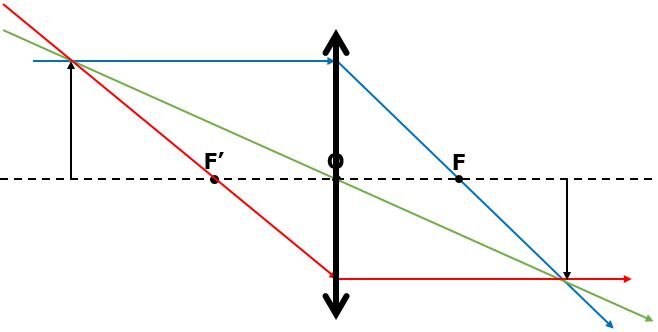
A diverging lens is one that disperses parallel light rays away from the principal axis.
Diverging lenses can be identified by touch, since the centre of the lens feels thinner than its ends.
There are three types of diverging lenses:
| Biconcave | Plano-concave |
Diverging meniscus |
| |
 |
 |
A diverging lens has the complete opposite effect of a converging lens. It disperses the rays passing through it away from the principal axis. As a result, the rays that pass through it will not converge at a single point, but instead will disperse.
A diverging lens is denoted by a double arrow with the ends pointing inwards. This symbol comes from a construction of prisms joined together.
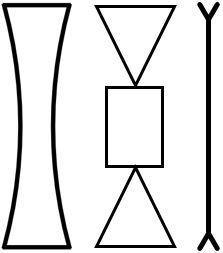
A diverging lens has the ability to gather together the extensions of the parallel rays that pass through it towards its focus.
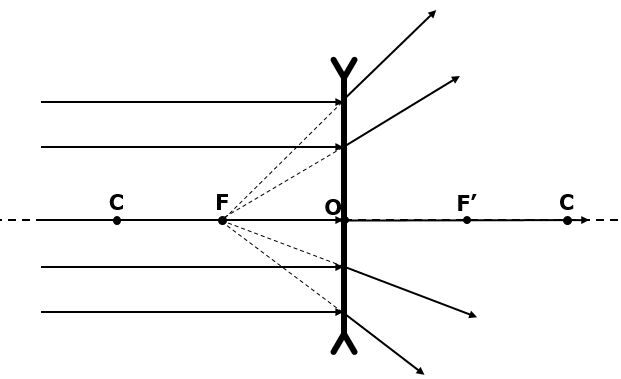
When an object is placed in front of a diverging lens, there are three main rays that can be used to determine the position of the image:
- A ray parallel to the principal axis is dispersed by the lens such that it appears to originate from the primary focus (principal focal point).
- A ray that passes through the optical centre of the lens is not deviated whatsoever.
- A ray directed towards the object focus (secondary focal point) is dispersed parallel to the principal axis.
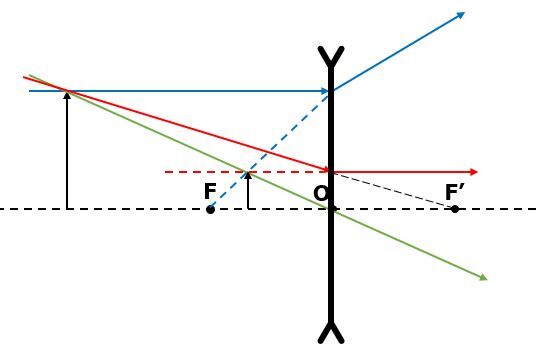
Chromatic aberration is an optical aberration that produces a blurred image due to the decomposition of white light into several bands of colour.
Chromatic aberration is a defect in lenses. These lenses disperse the light that passes through them. The consequence of this defect is it created a coloured halo around the observed objects, which diminishes the quality of the image.
As een in the illustration below, the incident rays are dispersed once they pass through the lens. As a result, the lens has a distinct focal point for each colour |(F_b, F_g, F_r).|
To correct this imperfection, a second lens is placed next to the first. This will correct the chromatic aberration. For a converging lens, a diverging lens is used as the second lens. For a diverging lens, a converging lens is used to correct it.
